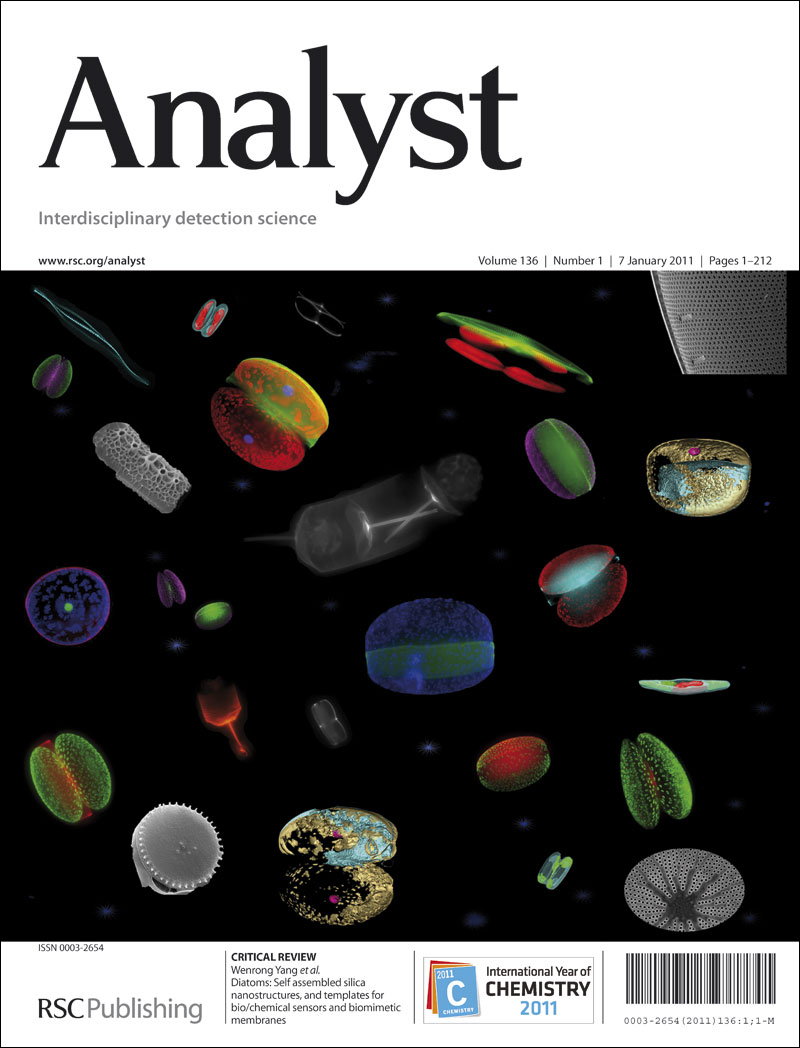h2s和HClO荧光探针的序列检测及其在实际样品检测、智能手机传感开发和生物成像中的应用
IF 3.6
3区 化学
Q2 CHEMISTRY, ANALYTICAL
引用次数: 0
摘要
硫化氢(H2S)和次氯酸(HClO)是典型的环境污染物和生物活性物质,其检测越来越重要。实时监测h2s和HClO的有效方法是利用荧光探针检测其水平的变化。本研究以2,2′-二硫代二吡啶苯甲酸酯和二氰双(异佛酮)烯为基料,研制了一种双位点化学传感器BPCN-SSPy,用于H2S和HClO的序列检测。该传感器在其荧光通道(λem: 611 nm)中对H₂S进行“开启”检测,随后对HClO进行比例检测(λem: F520 nm/F611 nm),具有快速响应和高选择性,可用于实际水样中的检测。值得注意的是,利用BPCN-SSPy对h2s和HClO的顺序颜色变化响应开辟了智能手机传感平台。BPCN-SSPy具有良好的生物相容性,可用于HeLa细胞中H2S的可视化和成像。此外,BPCN-SSPy的固态发光特性使其适合于潜在的指纹识别应用。本文章由计算机程序翻译,如有差异,请以英文原文为准。
Sequential detection of H₂S and HClO fluorescence probes and their applications in real sample detection, smartphone sensing development, and bioimaging
Hydrogen sulfide (H2S) and hypochlorous acid (HClO) are typical environmental pollutants and bioactive substances, and their detection has become increasingly important. A highly effective method for real-time monitoring of H₂S and HClO is to utilize a fluorescent probe to detect changes in their levels. In this study, a dual-site chemosensor BPCN-SSPy, based on 2,2'-dithiodipyridine benzoate and dicyanobis(isophorone)ene, was developed for sequential detection of H2S and HClO. The sensor enabled “turn-on” detection of H₂S in its fluorescence channel (λem: 611 nm), followed by ratiometric detection of HClO (λem: F520 nm/F611 nm), demonstrating rapid response and high selectivity, and was used for detecting them in real water samples. Notably, the sequential color change response of H₂S and HClO using BPCN-SSPy opened up a smartphone sensing platform. BPCN-SSPy demonstrated excellent biocompatibility and can be used for the visualization and imaging of H2S in HeLa cells. Additionally, the solid-state luminescent properties of BPCN-SSPy can make it suitable in potential fingerprint recognition applications.
求助全文
通过发布文献求助,成功后即可免费获取论文全文。
去求助
来源期刊

Analyst
化学-分析化学
CiteScore
7.80
自引率
4.80%
发文量
636
审稿时长
1.9 months
期刊介绍:
"Analyst" journal is the home of premier fundamental discoveries, inventions and applications in the analytical and bioanalytical sciences.
 求助内容:
求助内容: 应助结果提醒方式:
应助结果提醒方式:


